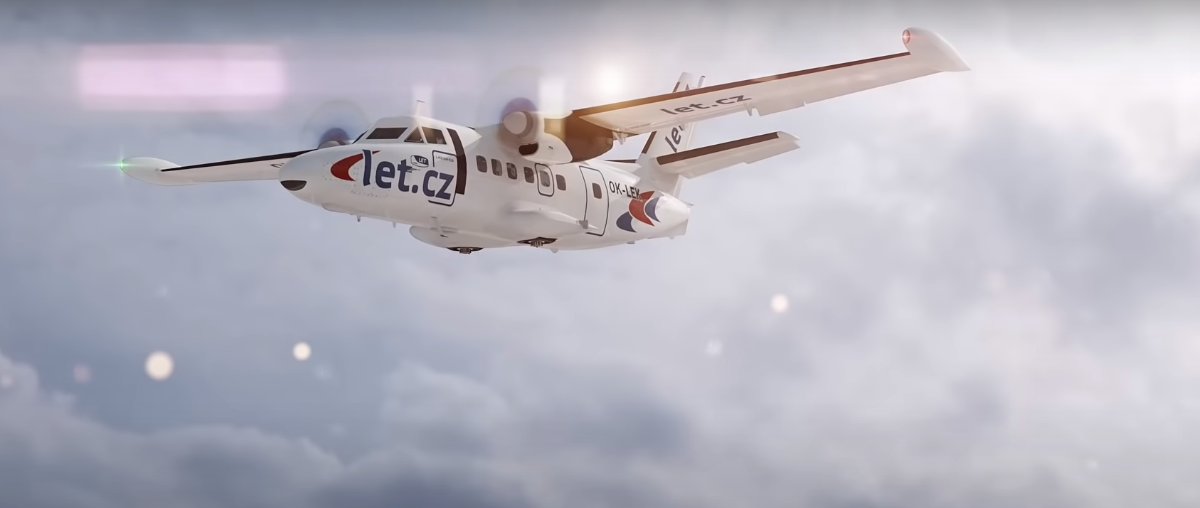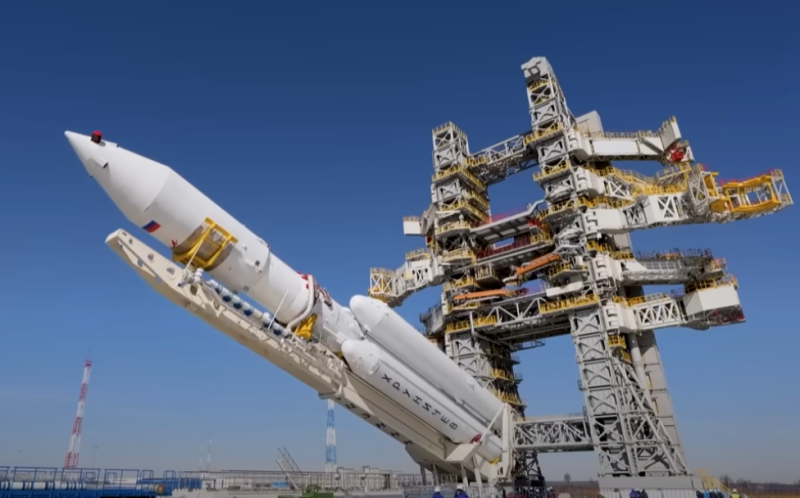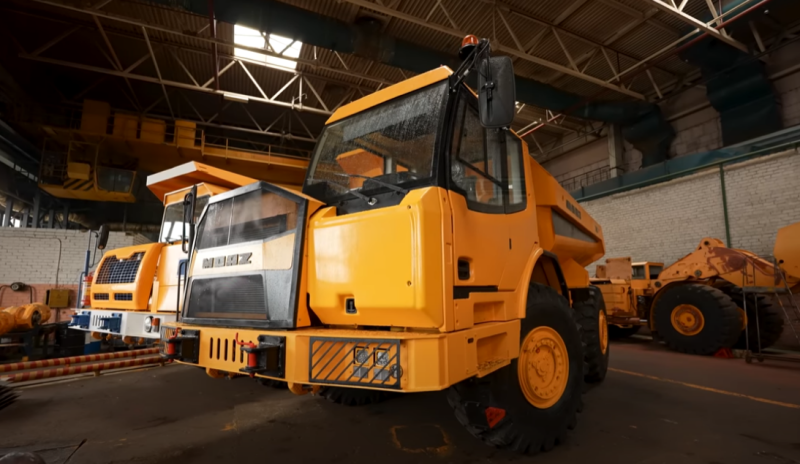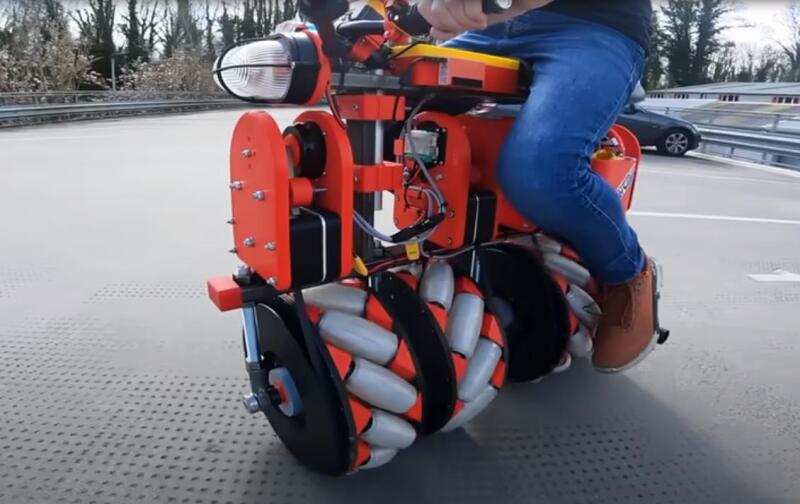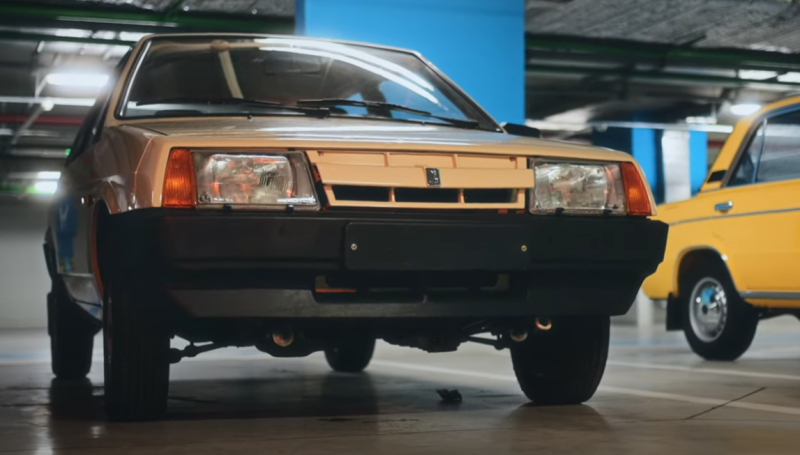CMEA and competition for the best project
By the mid-60s, in the vast Soviet Union and the socialist camp, there was an acute shortage of a small and inexpensive aircraft capable of servicing local airlines. Main requirements: number of passengers - 15-20, maximum distance - up to 600 km. The formation of the terms of reference for the project was carried out by the Soviet State Research Institute of Civil Aviation. The development of the aircraft was carried out simultaneously by several organizations: different design bureaus from the USSR and the Let factory from Czechoslovakia, located in the city of Kunovice. It was it that presented the most successful Turbolet project (another name is L-410), which they decided to implement within the framework of the CMEA. A few years later, a prototype was already ready, and on 16.04.1969/XNUMX/XNUMX it took to the skies.
 Aircraft assembly in Kunovice. Photo: YouTube.com
Aircraft assembly in Kunovice. Photo: YouTube.comThe tests were considered successful and the aircraft was put into production. It was assumed that the enterprise would produce up to 50 cars a year, which should be enough to meet the needs of the countries that are members of the CMEA.
Series and modifications of L-410
The "pilot" five liners were built in 1969. After test flights, innovations immediately appeared that improved the characteristics of the liner. There were so many of them that it was decided to assign the index "A" to the next series of aircraft. In 1971, finished cars began to be handed over to customers, among which the first copies were received by the company from Czechoslovakia Slov-Air.
 There are no frills in the cabin. Photo: YouTube.com
There are no frills in the cabin. Photo: YouTube.comBasically, they built aircraft of modification "A", designed for 17 passengers. In addition to it, other variants of the liner were produced:
✅ L-410AS - equipped with a more comfortable cabin, something like today's business class
✅ L-410AB with propellers from Hartzell HC-B4TN-3, which had 4 blades
✅ L-410AG - used for aerial photography
✅ L-410T - transport or ambulance, as well as a landing version of the vessel with a wider door, accommodating 12 paratroopers
Later, other versions of the “air route” (or “cheburashka”) appeared, as the L-410 began to be called after some time. The aircraft was constantly improved and in 1973 a model equipped with new engines developed in Czechoslovakia appeared. The motors were called M-601A, respectively, the aircraft equipped with them was assigned the index "M".
 Northern frosts are not terrible for this aircraft. Photo: YouTube.com
Northern frosts are not terrible for this aircraft. Photo: YouTube.comIn total, several hundred of these aircraft were produced, and in the late 70s this series gave way to the next - L-410UVP. It is curious that the abbreviation standing behind is deciphered in Russian: "short takeoff and landing." In order for the model to match the name, we upgraded:
✅ increased the wing and put on it an updated mechanization
✅ finalized M-601V motors
✅ improved plumage
✅ delivered more advanced avionics, in the creation of which Soviet specialists participated
But even this option did not become “static”. Since the 80s, the “minibus” has been constantly refined, the interior, engines have been improved, and a transport model has been created. For example, the updated M-601E aircraft engine had a minimum service life of 17 years (2 thousand hours). As a result, the "restyled" aircraft received a complex index and became known as the L-410UVP-E20. Here are its characteristics:
? power of GE H80-200 TVD engines - 800 "horses" each
? wingspan - 19,98 m
? length and height - 14,42 and 5,83 m
? empty aircraft weight (maximum takeoff weight) - 4050 (6600) kg
? payload - 19 people or 1,8 tons of equipment, goods
? speed - 335 km / h
? range - 1500 km
? ceiling - 4200 m
? fuel consumption - 245 kg / h
? crew - 2 pilots
This seemed not enough and General Electric H80-200 aircraft engines were installed on it in order to carry out export deliveries. And it succeeded! The model of the aircraft "UVP" has become the most popular.
Bankruptcy
By the 90s, the political situation in Europe had changed radically: the USSR began to fall apart, like the CMEA, the socialist camp was “empty”. Aircraft L-410 just stopped buying. However, the Czech company did not sit still, waiting for better times: they managed to find new customers from Latin America, Africa, and Asia. Low price and high performance - these qualities helped the aircraft compete in the foreign market with analogues.
 L-410 on a float chassis. Photo: YouTube.com
L-410 on a float chassis. Photo: YouTube.comBut the needs of the poor countries of the "Third World" were incomparable with the number of laners that the USSR and the CMEA countries once required. For the year, instead of the previous 50, 3-4 cars were produced. The supply of spare parts, maintenance of previously sold equipment somehow helped to survive.
 In the 90s, aircraft production in the Czech Republic decreased by 10 times. Photo: YouTube.com
In the 90s, aircraft production in the Czech Republic decreased by 10 times. Photo: YouTube.comNevertheless, the plant went bankrupt, but there were those who wanted to acquire it, and the enterprise became known as Aircraft Industries, as New Russia did not forget “its” plant, and in 2008 the Ural Mining and Metallurgical Company acquired 51% of the shares. Gradually, production began to improve: in the period 2009-2013, approximately 60 pieces of equipment were produced. This allowed the owner of the controlling stake to buy out the rest. So UMMC became the full owner of the aircraft factory.
Forward to the future
The plane required serious modernization, and he got it! In 2015, an updated version of the minibus L-410 NG soared into the sky. The model received a completely redesigned main components, avionics, which seriously improved the flight performance of the liner. In 2018, the serial production of the L-410NG began.
 The avionics of the updated aircraft is impressive. Photo: YouTube.com
The avionics of the updated aircraft is impressive. Photo: YouTube.comBy the way, the first aircraft of this series was received by a customer from Russia. In total, by the start of mass production, there were 16 orders from the Russian Federation, Poland, and Kazakhstan.
L-410 in Russia
In 2016, they decided to launch the production of “air routes” at the Ural Civil Aviation Plant. By the end of 2018, the first 5 vehicles had already been built and successfully tested. Production was getting better, orders appeared, and quite a lot.
 A new aircraft is being rolled out of the gates of the UZGA (Ural Civil Aviation Plant). Photo: YouTube.com
A new aircraft is being rolled out of the gates of the UZGA (Ural Civil Aviation Plant). Photo: YouTube.comIn the summer of 2020, the plant management announced the construction of the fiftieth aircraft. Basically, minibuses are ordered by small private companies.
With the result that
The production of L-410 aircraft, which began half a century ago, the Czechs managed to maintain and today develop further, however, not without the help of a Russian enterprise. The production of aircraft continues today, both in the Urals and in the city of Kunovice: although the demand is small, it is stable. In total, more than 60 aircraft have been produced since the late 1100s. Today they can be found in Australia and even Greenland. In Russia, liners are in demand in regions where there is poor road infrastructure. L-410 companies have PANH (Buryatia), "Orenburg", "KrasAero". The Khabarovsk Airlines enterprise uses six minibuses.
 Assembly of the aircraft fuselage in the Urals. Photo: YouTube.com
Assembly of the aircraft fuselage in the Urals. Photo: YouTube.comThere are many planes in the Arkhangelsk Second Squadron. As its leader stated on April 24 of this year, due to the situation in Ukraine, the Czechs refused to repair the L-410. However, for now, the employees of the enterprise manage on their own: the planes are new, bought on lease. Of course, the plane is obsolete. However, the use of new engines, constant upgrades, leading to improved performance, allow the machine to still confidently "keep afloat". And, given the already existing fleet of aircraft, we can confidently say that after half a century, the L-410 will continue to rise into the sky.
